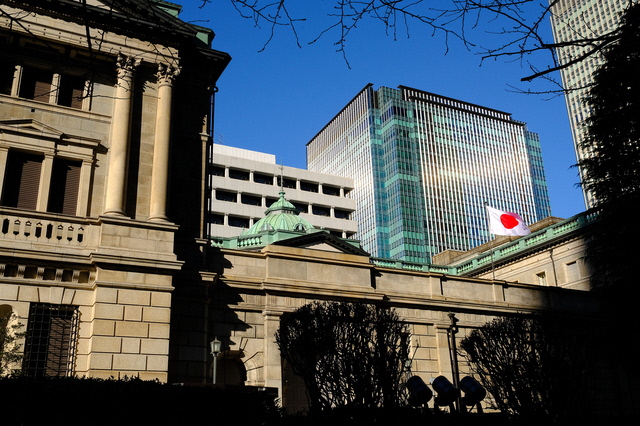OSE Derivatives
BOJ’s stay-the-course approach runs into Japan’s widening inflation

The expectation of moderating inflation that underlies the Bank of Japan‘s decision to keep monetary policy loose faces new pressure as price hikes spread beyond food to services, focusing attention on upcoming job data for hints about the central bank’s next move.
The BOJ has played the waiting game under new Gov. Kazuo Ueda. In a May 19 speech, he said that with Japan‘s 2% inflation target finally in sight, the cost of interrupting progress with “hasty policy changes” would be “likely be extremely high.”
In an interview the following week, he warned that a rush to tightening would “have a significant negative impact on employment and other areas.” Following that interview, Japan‘s currency weakened to 140 yen to the dollar for the first time since November and has recovered only slightly since.
Observers have questioned the BOJ‘s approach. “Inflation is running quite high,” a government source said. “I would say we are closer to the American and European conditions that the BOJ thinks.”
The BOJ‘s patience is rooted in the assumption, stated by Ueda, that inflation will “quite clearly fall” starting around the middle of this fiscal year that runs to March 31, 2024. The central bank’s view is that while 3%-plus inflation may be a burden on the public, it will lighten eventually as commodity prices fall.
But the data is starting to diverge this scenario. Japan‘s core consumer price index, excluding fresh food, rose 3.4% on the year in April as the economy’s post-COVID reopening pushed up prices for services. Seven regional power companies are set to raise household electricity rates on June 1, possibly further accelerating price growth.
The cause may be shifting from the commodity-price-driven cost-push inflation fueled by the Ukraine conflict.
Shotaro Kugo of the Daiwa Institute of Research estimates that demand factors were responsible for about 60% of the CPI increase in March, compared with 40% from the supply side.
Wages, one of the BOJ‘s big policy concerns, have shown improvement. Labor unions at big companies secured monthly pay increases averaging 3.91% in this spring’s negotiations as of May 19, the highest in three decades, according to the Keidanren business lobby. The central bank has acknowledged positive signs but is taking more time to judge.
Next year’s pay negotiations will be key. If wage growth stays on par with 2023 even after inflation has cooled off, “that could be considered sustainable and stable inflation,” a BOJ source said. Even if the central bank does not hold off for that long, it could wait at least until it can gauge the likely outcome from economic indicators.
Monthly employment data due out Tuesday will be the first set to fully reflect the spring wage negotiations’ results. Earlier data had shown inflation-adjusted real wages shrinking on the year for a 12th straight month in March.
Some of Ueda’s comments suggest the BOJ may be starting to waver. He has noted the difficulty of understanding the causes of inflation in real time and has acknowledged that the risk of the bank getting its forecast wrong is “not zero.”
The governor continues to hold that the current price growth is driven mainly by “temporary” cost-push factors. But he has opened the door slightly to a possible course correction, saying that “we want to move quickly” if a change is deemed necessary.
“It may be difficult to deny the possibility that we are already in a new normal that is different from the period of ‘low for long'” interest rates, Ueda said at an international conference last Wednesday.
Past criticism over rate hikes that ended up harming Japan‘s economy has made BOJ officials more inclined to wait rather than risk acting in haste. But the U.S. Federal Reserve and other Western central banks were criticized as being behind the curve when they failed to anticipate rising inflation and are still tightening now, even at the risk of causing a recession.
Related links




